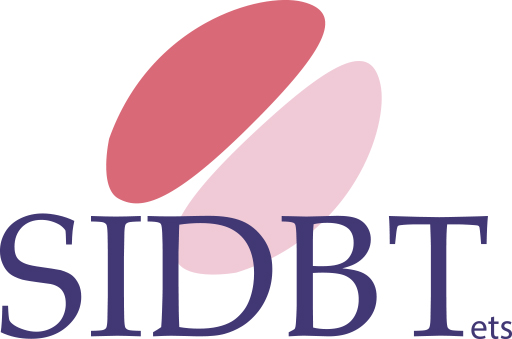In DBT, “D” sta per dialettica e rimanda all’atteggiamento di costante ricerca di equilibrio tra opposti che informa il trattamento; “B” sta per behavioral, ossia approccio attento al comportamento, e rimanda all’attenzione ai comportamenti, a ciò che accade e che costituisce “i fatti” su cui si focalizza il trattamento, “T” sta per trattamento.
Comprehensive or standard DBT uses principles and protocols and has several modalities:
- Individual therapy (weekly), with two functions: to improve treatment motivation and to support the application of skills to problem solution
- Group meetings (skills training, weekly) with one function: teaching and learning useful skills to deal with problem situations effectively and without harming oneself. They are organized on 4 modules (skills training, weekly): 1. Observing and describing one's internal experiences and external reality by developing the ability to stay focused and fully participate in the present moment in a non-judgmental way (Mindfulness Skills), 2. Recognizing and regulating one's emotions (Emotional Regulation Skills), 3. Tolerating suffering and painful emotions in the moment when the situation cannot be changed (Suffering Tolerance Skills), 4. Being effective in interpersonal relationships (Interpersonal Efficacy Skills).
- Telephone consultation (to be determined with individual therapist)
- Therapist consultation teams
- Ancillary treatments (residential treatment, possible pharmacotherapy, interventions on the environment and in collaboration with other health or social services)
Cfr. I manuali:
- Marsha M. Linehan, DBT Skills Training, ed. it. a cura di Lavinia Barone e Cesare Maffei, 2015, Cortina Ed.
- Marsha M. Linehan, Trattamento cognitivo-comportamentale del disturbo borderline, 2015, Cortina Ed.
DBT treatment is delivered by a team of therapists, who meet periodically and are the referrers of the clients taken in charge, with different roles and functions.
Treatment includes an initial phase, called pre-treatment, led by the individual therapist and dedicated to orienting the patient with respect to DBT, sharing therapy goals, and defining patient and therapist commitments.
START of treatment:
Once agreement is reached with respect to goals and target problems that will be addressed in treatment, treatment starts, with a mutual commitment between client and therapist to hold it for at least one year. At the end of the first year, goals and target problems are re-evaluated, and treatment may stop if they are considered to have been met or supplemented with time and modalities to be agreed upon. Standard treatment includes a twice-weekly commitment to
- Individual therapy
- Group skills training
Cui si aggiunge la possibilità di consultazione telefonica tra gli appuntamenti concordati.
DBT has been shown to be indicated and effective for adult and adolescent clients (and family members) who present with a range of problem behaviors such as:
- pervasive problems in managing and controlling emotions and interpersonal relationships
- suicide attempts and/or suicidal ideation
- self-harm/harming oneself (e.g., cutting oneself, burning oneself...)
- dangerous behaviors to self or others (e.g., reckless driving, being involved in or initiating fights or physical assaults)
- misuse of alcohol and/or substances, misuse of drugs
- eating problems (e.g., uncontrolled eating behaviors or bulimia) combined with other psychiatric issues
- social withdrawal and/or isolation
All of these behaviors, which are particularly, but not exclusively, present in individuals with Borderline Personality Disorder, are mostly characterized by the fact that they are enacted in situations in which there is an intense emotional activation (e.g., anger, sadness, shame, fear...) that the person is unable to reduce or regulate in a functional way, generating a condition of suffering that comes to be unbearable and significantly compromises the person's life.
